
Journal of Hematopathology
Scope & Guideline
Exploring the depths of blood disorders.
Introduction
Aims and Scopes
- Hematological malignancies research:
The journal extensively covers various hematological malignancies, including but not limited to leukemias, lymphomas, and myelomas, providing insights into their pathogenesis, diagnosis, and treatment. - Molecular and genetic characterizations:
A significant focus is placed on the molecular and genetic underpinnings of hematological diseases, utilizing advanced techniques such as next-generation sequencing and RNA sequencing to identify pathogenic variants and gene rearrangements. - Diagnostic methodologies:
The journal emphasizes the development and validation of novel diagnostic techniques, including immunohistochemistry, flow cytometry, and automated staining protocols, to enhance the accuracy of hematopathological diagnoses. - Case studies and clinical challenges:
Through case reports and series, the journal explores unique and challenging cases in hematopathology, shedding light on diagnostic dilemmas and the clinical implications of various hematological disorders. - Translational research:
There is a strong emphasis on translational research that bridges laboratory findings with clinical applications, aiming to improve patient outcomes through better diagnostic and therapeutic strategies.
Trending and Emerging
- Next-generation sequencing in diagnostics:
The increased use of next-generation sequencing (NGS) for the identification of pathogenic variants and complex genetic rearrangements in hematological malignancies is a prominent trend, enhancing diagnostic accuracy and enabling personalized treatment approaches. - Impact of CAR-T therapy:
Research focusing on the effects and outcomes of CAR-T cell therapy in various hematological malignancies, including the challenges related to therapy-related neoplasms and lineage transformation, has become increasingly significant. - Immunological aspects of hematological diseases:
There is a growing trend towards exploring the immunological factors influencing hematological diseases, including studies on immune evasion mechanisms and the role of immune checkpoints in lymphomas and leukemias. - Artificial intelligence and computational techniques:
The integration of artificial intelligence and computational methods in diagnosing and characterizing hematological diseases is emerging, indicating a shift towards more tech-driven diagnostic strategies. - Interdisciplinary approaches:
The incorporation of interdisciplinary perspectives, such as the intersection of hematology with infectious diseases and dermatology, is gaining traction, highlighting the complex interplay of various medical fields in understanding hematopathological conditions.
Declining or Waning
- Traditional histopathological techniques:
There is a noticeable decrease in publications focusing solely on traditional histopathological techniques without integration of molecular or genetic analyses, as the field moves towards more comprehensive and technologically advanced approaches. - Basic epidemiological studies:
Research centered on basic epidemiological data without a molecular or diagnostic focus has seen a decline, likely due to the growing interest in understanding the molecular mechanisms behind hematological diseases. - Non-specific hematological disorders:
Themes exploring non-specific or less characterized hematological conditions have waned, as the journal increasingly prioritizes studies that provide clear molecular insights or significant clinical relevance.
Similar Journals
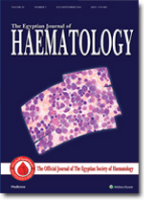
Egyptian Journal of Haematology
Exploring Breakthroughs in Blood Health and DiseaseThe Egyptian Journal of Haematology, published by WOLTERS KLUWER MEDKNOW PUBLICATIONS, stands as a pivotal resource in the field of hematology, particularly within the context of Egypt and the broader Middle Eastern region. This journal is dedicated to disseminating high-quality research that explores the latest advancements in blood disorders, hematologic malignancies, and transfusion medicine. With a focus on original research, case studies, and reviews, it aims to provide a comprehensive platform for hematologists, researchers, and healthcare professionals to enhance their understanding and management of hematological conditions. Although it is not an open-access journal, the rigorous peer-review process ensures that only the most impactful studies are published, contributing to the journal's reputation in the academic community. The Egyptian Journal of Haematology serves as an essential tool for advancing knowledge, improving clinical outcomes, and fostering collaboration among experts in the field.
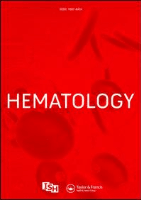
Hematology
Elevating Hematology: A Platform for Cutting-Edge ResearchHematology is a distinguished open-access journal published by Taylor & Francis Ltd, dedicated to advancing research and knowledge in the field of hematology. Established in 1996, the journal has continually evolved to meet the needs of a growing community of researchers and practitioners, providing a vital platform for disseminating innovative findings and clinical insights. With its impact factor reflecting a robust commitment to quality scholarship, Hematology has achieved a respectable position in its category as evidenced by its Q3 ranking in the Hematology category and ranks #85 out of 137 in the Scopus index, which positions it in the 38th percentile among its peers. The journal’s open-access policy, initiated in 2019, further enhances its reach and accessibility, allowing a broad audience of professionals, researchers, and students to engage with high-quality research without barriers. By covering a wide range of topics related to blood disorders, treatment methodologies, and emerging therapies, Hematology stands as an essential resource for those dedicated to innovation in this critical area of healthcare.

INTERNATIONAL JOURNAL OF HEMATOLOGY
Fostering Global Insights in Blood ResearchThe INTERNATIONAL JOURNAL OF HEMATOLOGY, published by SPRINGER JAPAN KK, serves as a critical platform for advancing research in the field of hematology. With a prestigious history spanning over three decades from 1991 to 2024, this journal is recognized for its impactful contributions, evidenced by its Q2 category ranking in Hematology for 2023, and its notable position at rank #71 out of 137 in the Scopus Medicine Hematology category. Researchers and professionals within the hematology community benefit from the journal's rigorous peer-reviewed articles that cover a wide range of topics, including clinical studies, basic research, and novel therapeutic strategies. Though currently non-open access, it provides essential insights and findings to an audience passionate about the latest advancements in blood disorders and treatments. Situated in Japan, the journal not only showcases high-quality research but also fosters a global exchange of knowledge in hematology, making it a significant resource for scholars, practitioners, and students alike.
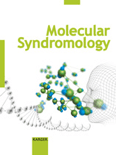
Molecular Syndromology
Innovating Research in Genetic DisordersMolecular Syndromology is a premier journal focused on the intricate connections between molecular genetics and syndromology, fostering discussions that advance our understanding of genetic disorders and their clinical implications. Published by KARGER, a distinguished name in medical and scientific publishing, this journal serves as a valuable platform for researchers, clinicians, and students in the field of genetics. With its ISSN 1661-8769 and E-ISSN 1661-8777, the journal has gained recognition in its category, currently positioned in the Q4 quartile for both genetic and clinical genetics disciplines according to the latest metrics. Despite being indexed lower in Scopus rankings, it addresses crucial gaps in research and offers open access options that enhance visibility and dissemination of knowledge. As it continues to converge from 2010 to 2024, Molecular Syndromology aims to bridge the gap between molecular research and its clinical applications, making a significant impact in the evolving landscape of genetic medicine.
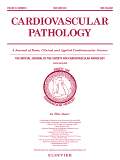
CARDIOVASCULAR PATHOLOGY
Bridging the gap between pathology and cardiovascular care.CARDIOVASCULAR PATHOLOGY, published by Elsevier Science Inc, is a distinguished journal dedicated to the dissemination of high-quality research in the fields of cardiology, pathology, and cardiovascular medicine. With an ISSN of 1054-8807 and an E-ISSN of 1879-1336, this journal has established itself as a vital resource for researchers, clinicians, and students alike. It is positioned in the Q2 quartile for both cardiology and pathology, indicating its significant impact and relevance in these disciplines. The journal offers a platform for innovative studies, reviews, and clinical insights, aiming to enhance our understanding of cardiovascular conditions and their pathological underpinnings. With an H-index that showcases its scholarly influence, CARDIOVASCULAR PATHOLOGY is committed to advancing the field through rigorous peer review and open dialogue among professionals. The journal is accessible through institutional subscriptions, making it an essential reference point for ongoing research through its convergence of knowledge from 1992 through 2024.
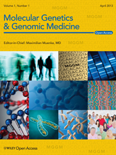
Molecular Genetics & Genomic Medicine
Fostering global dialogue in molecular biology.Molecular Genetics & Genomic Medicine, published by WILEY, is an esteemed and open-access journal that has been a prominent source of knowledge in the fields of genetics and molecular biology since its establishment in 2013. With an ISSN of 2324-9269, it aims to provide a platform for the dissemination of novel findings and innovative research that pushes the boundaries of genomics and its clinical applications. The journal holds a Q3 categorization in Genetics, Clinical Genetics, and Molecular Biology, reflecting its growing influence in these disciplines, as evidenced by its Scopus rankings. Researchers, professionals, and students alike will find valuable insights and advancements in genomic medicine, making this journal an essential resource for those dedicated to the understanding and application of genetic and molecular research in healthcare. Located at 111 River St, Hoboken, NJ, Molecular Genetics & Genomic Medicine continues to foster a global dialogue within the scientific community, ensuring accessible knowledge for all.
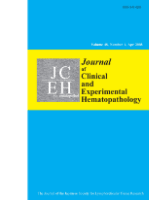
Journal of Clinical and Experimental Hematopathology
Illuminating Pathways in Hematologic Science.The Journal of Clinical and Experimental Hematopathology, published by the Japanese Society of Lymphoreticular Tissue Research, is a vital resource dedicated to advancing the field of hematopathology. With an impressive Open Access model since 2019, this journal provides researchers, clinicians, and students from around the world with unfettered access to cutting-edge research and developments in hematology and pathophysiology. Based in Japan, it has established a prominent reputation in the academic community, boasting a Q3 quartile ranking in Hematology and Q1 rankings in both Medicine (Miscellaneous) and Pathophysiology as of 2023. With its innovative contributions and high visibility, the journal not only fosters scholarly discourse but also impacts clinical practices, making it an essential publication for anyone interested in the complexities of hematologic disorders. For submissions and further inquiries, the journal is located at Nagoya University Graduate School of Medicine, Japan.

PATHOLOGY & ONCOLOGY RESEARCH
Pioneering Discoveries in Pathology and OncologyPATHOLOGY & ONCOLOGY RESEARCH is a prominent international journal published by FRONTIERS MEDIA SA, dedicated to advancing the fields of pathology and oncology. Operating from the Netherlands, with a distinguished address in Switzerland, this journal plays a crucial role in disseminating significant research findings and insights from 1995 to 2024. With an ISSN of 1219-4956 and E-ISSN of 1532-2807, it is indexed in well-respected databases, facilitating access to a global audience of researchers and practitioners. Notably, the journal ranks in the Q3 category for Cancer Research (2023), while being recognized in the Q2 categories for both Medicine (Miscellaneous), Oncology, and Pathology and Forensic Medicine, reflecting its authoritative status in these vital disciplines. Scopus rankings further highlight its influence, with notable percentiles across various fields. Although it follows a subscription model, the journal remains committed to publishing high-quality, peer-reviewed research that bridges conceptual gaps and encourages further exploration in oncology and diagnostic pathology, making it an indispensable resource for academics and professionals engaged in these critical areas of medicine.
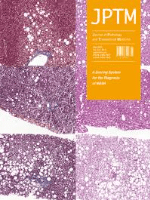
Journal of Pathology and Translational Medicine
Pioneering Discoveries in Pathology and Translational MedicineThe Journal of Pathology and Translational Medicine, published by the Korean Society of Pathologists, is a distinguished peer-reviewed Open Access journal that has been at the forefront of advancing the field of pathology and histology since its inception in 1985. With an established ISSN of 2383-7837 and an E-ISSN of 2383-7845, the journal serves as a vital platform for disseminating high-quality research, fostering collaboration among professionals and offering valuable insights into both clinical applications and theoretical advancements. Recognized for its influence in the field, it holds a commendable Q2 ranking in both Histology and Pathology & Forensic Medicine categories in 2023, and ranks #52/208 in Scopus for Medicine – Pathology and Forensic Medicine, demonstrating its impact and reach within the academic community. Located in South Korea at 1209 Gwanghwamun Officia, 92 Saemunan-ro, Jongno-gu, Seoul 03186, this journal not only caters to researchers and professionals but also supports students striving to deepen their understanding of pathology. Join the growing body of knowledge and stay updated with the latest findings in this essential field of study through the journal's open access format, promoting worldwide accessibility and engagement.
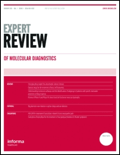
EXPERT REVIEW OF MOLECULAR DIAGNOSTICS
Unveiling Innovations in Diagnostic TechniquesEXPERT REVIEW OF MOLECULAR DIAGNOSTICS, published by Taylor & Francis AS, serves as a pivotal platform for facilitating advanced research and discourse in the fields of Genetics, Molecular Biology, Molecular Medicine, and Pathology. With an impressive Impact Factor and a distinguished status as Q2 in multiple categories, along with a prestigious Q1 ranking in Pathology and Forensic Medicine (2023), this journal continues to attract contributions from leading experts and budding researchers alike. The journal aims to address critical developments in molecular diagnostics, providing insightful reviews that propel the understanding and application of diagnostic techniques in various medical contexts. Accessible to a diverse audience in the academic community, the journal emphasizes the importance of molecular diagnostics in both clinical and laboratory settings, promoting innovative methodologies and comprehensive evaluations of emerging technologies. With ongoing convergence of scientific discovery advancing rapidly from 2001 through 2024, EXPERT REVIEW OF MOLECULAR DIAGNOSTICS remains essential for those committed to furthering the fields of molecular diagnostics and healthcare advancements globally.